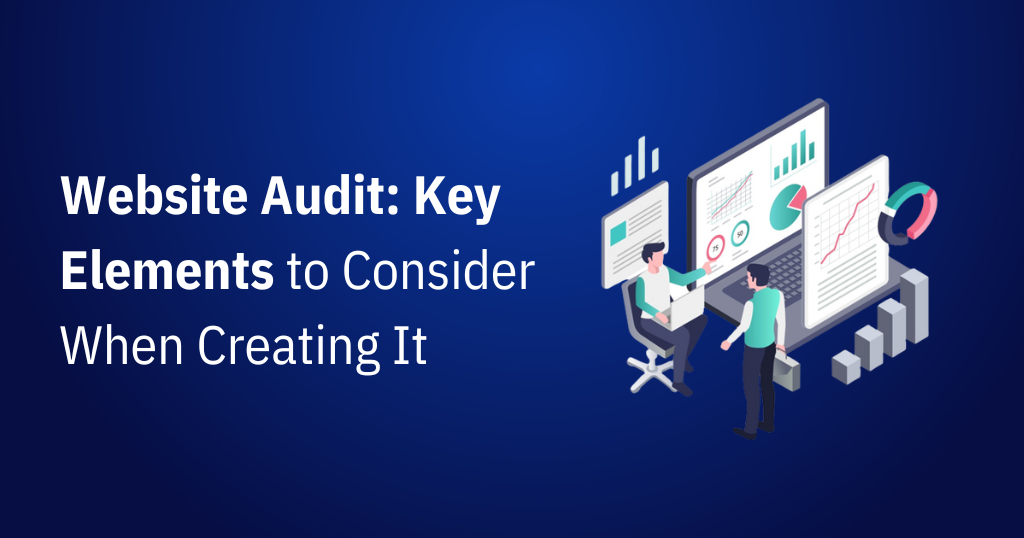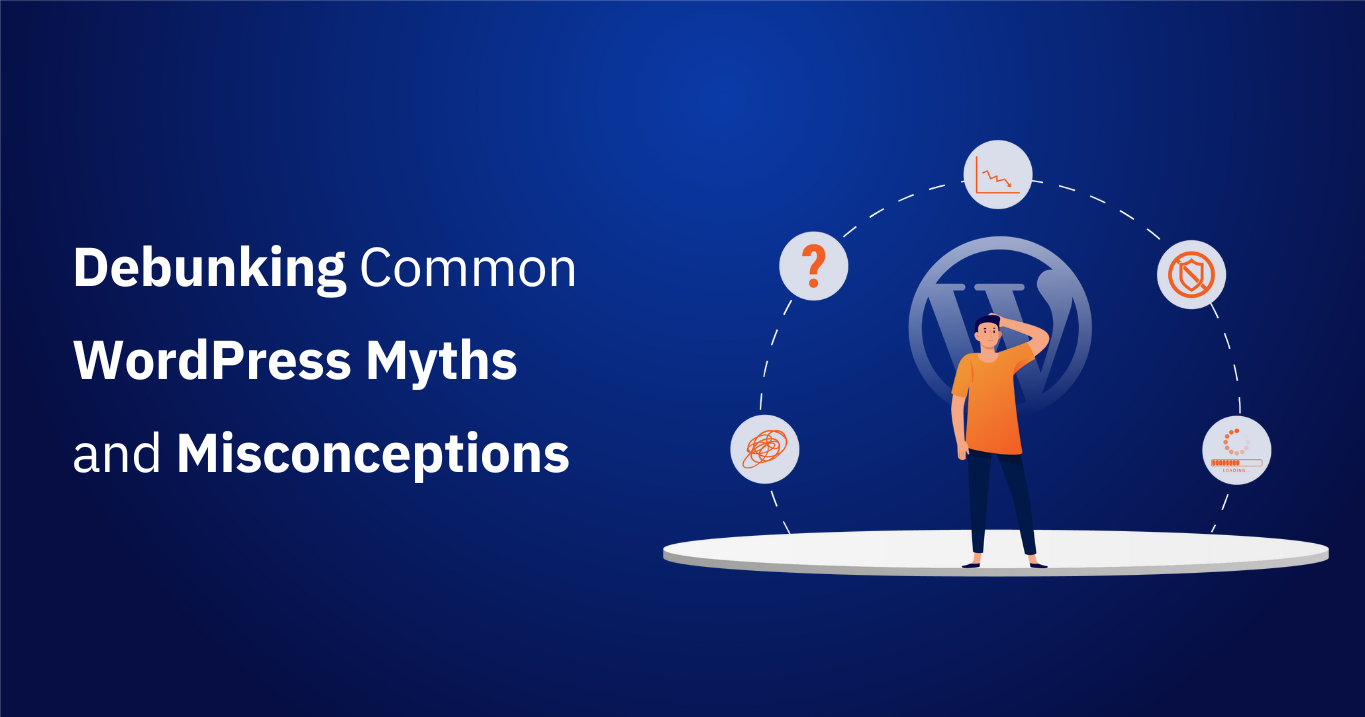Ever puzzled over the necessity of a website performance audit? Ask yourself, “When did you last scrutinize the well-being of your website? Paralleling our need for routine health examinations, websites also demand regular diagnostics.
Website audits are pivotal in detecting factors detrimental to the user experience and website functionality.
In this article, we explore, underlining the importance of website audits, and the aspects that should be considered in them. Fasten your seatbelts as we illuminate the significance of website audits.
What should the website audit cover?
A website audit should examine all aspects of your website’s performance and potential. It should assess your site’s search, user experience, conversion optimization, on and off-page SEO, and many other factors.
The following are the key areas that the website audit should address:
1. Design Audit:
A design audit is an in-depth analysis of a company’s visual identity, including but not limited to its website, logo, typography, and color scheme. The purpose of the audit is to make sure that all of a company’s design elements are consistent with the brand’s goals. It primarily focuses on:
- User Interface (UI): Make sure that elements like buttons, icons, forms, and design aspects like colors, fonts, spaces, etc. are all the same. Consistency makes things more comfortable and easy to use.
- User Experience (UX): Check to see if the website’s navigation, information hierarchy, and usability make sense to the user. You could try usability testing tools or surveys to learn more.
- Responsive Design: You should check your website on various screen sizes and devices to ensure the design is responsive and provides a consistent experience across all platforms.
- Branding Consistency: Ensure that the look and feel of your website are consistent with your brand’s guidelines and successfully convey the brand’s message.
Design audit frequency
Design audits should be performed every 6-12 months, however, this number can vary widely depending on the specifics of your company. Based on the findings, you should continuously improve your website.
2. SEO Audit:
Evaluating how well your site is optimized for search engines is part of the SEO audit. The purpose of the audit is to identify strengths, weaknesses, and opportunities in order to increase search engine rankings and, hence, traffic.
Here are the things to be considered in an SEO audit:
Technical SEO
Technical SEO refers to server and website optimizations that affect how well search engines can crawl and index your content. Among these things are:
- Crawlability: You can use tools like Google Search Console to find out if search engines can crawl your site correctly.
- XML Sitemap: Keep an accurate and up-to-date XML sitemap that search engines can use to learn about your site’s structure.
- Robots.txt file: This file tells search engines not to visit certain pages. Make sure everything is set up right in the file.
- Site Speed: How long it takes for a page to load affects user experience and how search engines rank it. Use tools like Google’s PageSpeed Insights to evaluate your site’s speed.
- Mobile Optimization: Google uses mobile-first search, so your site should be easy to use on mobile phones.
On-Page SEO
This refers to a page’s text and HTML source code:
- Meta Tags: Make sure every page has unique and informative meta titles and descriptions.
- Header Tags: Look at how your H1, H2, etc. are used and where your keywords are placed.
- Keyword Optimization: Verify to see if your pages are optimized for important keywords, but avoid overusing keywords.
- URL Structure: URLs should be short, detailed, and include keywords. They should also be search engine friendly.
Off-Page SEO
This refers to ranking factors outside of your site, such as:
- Backlinks: Use tools to assess your backlink profile. Check the quantity and quality of backlinks and look for links that could be damaging or of low quality.
Social Signals: Social shares are not a straight ranking factor, but they can help people find and visit your site.
Content Analysis
- Duplicate content: Having the same content on your site can hurt your SEO. Use tools to find and eliminate duplicate content.
- Quality of content: The content should be of good quality, relevant, and useful to the user.
- Internal Linking: Check to see if you have the right internal links, which help search engines understand how different pages on your site relate to each other.
Local SEO
If your business has a local presence, make sure your NAP (Name, Address, and Phone number) information is the same everywhere on the web. Also, make sure that your Google My Business page is optimized.
Security
Check your site’s security (HTTPS) to make sure it’s safe. Google gives secure sites a higher score.
SEO audit frequency
It is recommended to conduct an SEO audit quarterly. Additionally, you should also consider doing an audit if you notice a sudden drop in rankings or traffic, or after making major changes to your site.
If you’re interested in learning more about SEO tips, check out this article.
3. Content audit
Reviewing the content you’re creating periodically will help you visualize gaps for which new content can be created and also highlight what old content pieces can be repurposed.
- Performance Metrics: Analyse the performance of every bit of content. You can look at things like page views, bounce rate, time spent on the page, conversions, and social shares.
- Relevance and accuracy: Check to see if the information on your website is still relevant and accurate. Many times, content in blogs, case studies, and whitepapers, among others, needs to be updated. It’s important to make sure the information is regularly updated.
- Consistency: Check to see if the tone, style, and voice of all your content are the same. Consistency helps build a strong brand identity.
- SEO Review: Analyze your content from an SEO point of view. Examine the use of keywords in your content. Meta descriptions and alt tags should be in place and working well. Organize your content properly with the appropriate use of headers.
- User Engagement: Identify if the content is intriguing to your target audience. You can determine this from how many comments, shares, and likes your post gets.
- Content Duplication: Make sure your site doesn’t have any duplicate content, which can hurt your SEO. Use tools to look for content that has been copied.
Content audit frequency
It is recommended to perform a content audit every 3-4 months if you post content on your site frequently. If you do not post content regularly on your website, you can perform the audit every six months or once a year.
4. Speed/Performance Audit
A website audit includes a look into the page speed and core web vitals that show how well or poorly the page is loading. Addressing website speed issues leads to better UX and a positive impact on SEO.
It should cover the following aspects:
Page Load Speed
The time needed to download and view the website content is a crucial factor.
- Server Response Time: How quickly your site loads depends on how fast your server is. This can be measured with tools like Google’s PageSpeed Insights.
- Large Images or Files: If your site has too many large images or other media files, it will move much more slowly. Images need to be optimized for the web.
- Render-blocking JavaScript and CSS: JS scripts and CSS files can slow down the speed at which a page loads. These can be found with the help of tools like PageSpeed Insights.
For tips to improve the page load speed of a WordPress website, go through this article, “Ways you can improve WordPress website speed.”
Website Functionality
- Broken links: These lead to 404 errors, which can be a nuisance for users and bad for SEO.
- Redirects: If your site has too many redirects, it can slow down and affect the user experience. Aim to reduce them as much as possible.
Compatibility with browsers
Your site should load quickly and work well in all of the major browsers. Make sure of this by testing your site on more than one device.
Mobile Performance
Since more than half of all internet traffic now comes from mobile devices, it’s important that your site works well on them. This means both speed and usefulness.
Website Hosting
How fast your site loads depends a lot on how well your web hosting server works and how it is set up. Make sure you have a good host that fits the needs of your website.
Plugins and themes
If you use a content management system like WordPress, keep in mind that some plugins or themes can drastically slow down your site. Check your plugins and themes often and update them to make sure they don’t negatively impact your site’s speed.
Website speed audit frequency
Ideally, a thorough performance audit of the entire website should be carried out somewhere between six months and a year. However, using tools like Google Analytics and PageSpeed Insights to track your site’s speed and performance monthly could prove beneficial.
You should also do a performance audit after making any major changes to your site, including adding new features, media, or plugins, to make sure they haven’t slowed it down.
5. Security audit
A part of the technical audit of the website involves scanning the website for malware and checking against security best practices. An advanced security audit also includes steps like penetration testing. Consider the following aspects when performing the security audit:
- Vulnerability Assessment: Look through your website for vulnerabilities that hackers could use. This includes things like security holes, bugs, and misconfigurations.
- Penetration testing: Simulate an attack on your website online to see how safe it is.
- Access Controls: Evaluate who has access to which website information and functions. Ensure there are appropriate restrictions in place.
- Data Encryption: Check to see if private information like customer information, credit card numbers, etc., is encrypted both in transit (using SSL/TLS) and when it is stored.
- Security Policies: Look over your security policies to make sure they are up-to-date and cover everything you need them to. This could include password policies, data retention policies, incident response plans, etc.
- Software Updates: Make sure that all of your software used to build and manage your website is up-to-date, including your CMS, plugins, third-party apps, and themes. Older versions may have known vulnerabilities that can be used against them.
- Backup and Disaster Recovery: Confirm that your website is being backed up regularly and that a disaster recovery plan is in place.
- Firewalls and Intrusion Detection Systems (IDS): Ensure that there is a good firewall and that intrusion detection systems are active. They should be set up properly to find threats and respond to them.
- Log Analysis: System and security logs should be looked at regularly to find any suspicious behavior.
Security audit frequency
A security audit should be performed three times a year to avoid vulnerabilities and attacks. Depending on your website’s size, business, and data sensitivity, vulnerability assessments, software updates, and log analysis should be done more often.
Conclusion
A website audit for your B2B establishment is less of an extravagance and more of an imperative. It equips you to discern website shortcomings, refine the user experience, improve traffic and conversion rates, fortify website security, and stay a step ahead of the competition.
Optimizing your website’s performance can substantially impact client acquisition and loyalty. Do not delay until your website begins to falter. Anticipate the trajectory and seize the advantages brought forth by a website audit.
Want to audit your website? Talk to our WordPress experts.


